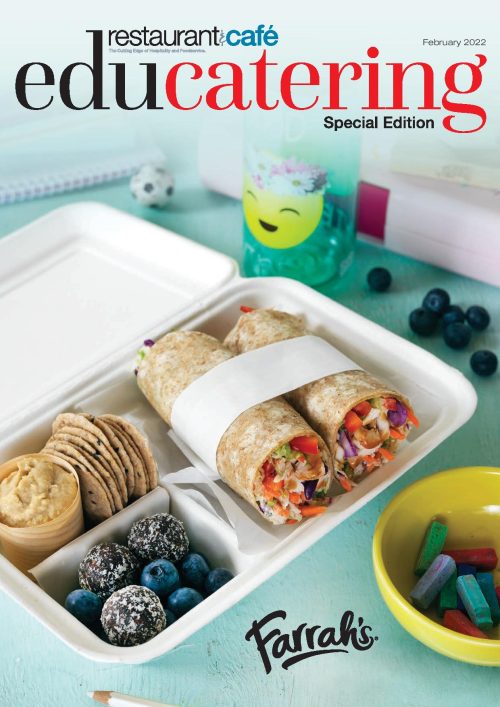The Ministry of Education is currently in the process of updating its nutrition guidelines for Ka Ora, Ka Ako in collaboration with the Ministry of Health. These updates are expected to be completed by April and Restaurant & Café Educatering will be doing a special feature regarding the new nutritional guidelines.
Part of this update will be looking at plant-based alternatives and whether these products fit within the non-processed or less-processed foods that are recommended under the current guidelines. The popularity of plant-based foods, particularly how they fit into a sustainability ethos, is on the rise and plant-based eating is trending in snacks for kids.
The Programme So Far
In August last year, and interim evaluation report of the Healthy School Lunches Programme was commissioned to help the Ministry of Education assess the early impact of the pilot programme based on the priority outcomes of food availability, consumption, hunger reduction, wellbeing, and attendance.
Evidence for the evaluation included learner food diaries over two one-week periods from 2,729 learners in 129 classes across 38 schools; lunch photos collected from a selection of classes in 128 schools; focus groups with school staff in nine schools and attendance data from 87 schools.
According to Education Minister Chris Hipkins, early evidence suggested young people are less hungry, eating healthier food and have better physical and mental wellbeing since the introduction of the Ka Ora, Ka Ako | Healthy School Lunches programme.
“These initial findings are very encouraging. The interim report shows that the school lunches programme is improving food security and mental wellbeing, especially for our most disadvantaged learners. It also improved diet and nutrition for all students in the programme,” Hipkins said.
Suppliers and Schools
Local capacity, capabilities and infrastructure were not always readily available to schools to quickly undertake a school lunch programme. Regional capacity to prepare and provide food every day varied, meaning that some schools could call upon several organisations to prepare and deliver food to the required numbers of learners every day, while other schools lacked any feasible options.
To simplify the process for schools who chose to outsource food preparation and delivery, a panel of supplers were selected through an open tender process. Schools and kura were then able to select from this panel of suppliers that demonstrated they met the minimum standards of food hygiene, waste management, and food preparation.
By the end of 2020, most Tranche 1-3 schools (76 percent) opted to use an external supplier(s) while a few schools (19 percent) chose to prepare their own lunches, hiring requisite staff to deliver the pilot. Very few schools chose a combination of both external and internal supplier models.
The Benefits for Kiwi Kids
There is no doubt that a child who grows up without adequate nutrition will face significant barriers to academic achievement, in addition to the cognitive, emotional, mental, and physical consequences of food insecurity.
Food security is essential for children and young people to be happy and healthy, and learning and developing. Children living in food insecure households are less likely to consume nutritionally balanced diets essential for optimal growth and development, and this can have immediate and long-term negative consequences for their health and education.
Household food insecurity has been associated with a wide range of child health and development problems from infancy through to adolescence, including but not limited to: child obesity, poor academic performance, and developmental and behavioural problems.
The interim evaluation showed that the pilot programme often achieved more than what was expected in the initial 2 to 3 months,’ and benefits were ‘greater’ for the most disadvantaged learners, the evaluation report says. The pilot also showed ‘very good progress towards addressing hunger’, as well as ‘progress towards improving well-being’.
The report says the pilot showed:
- ‘large benefits’ for all primary and intermediate learners in respect of the types of food available and consumed
- ‘large gains’ in fullness for learners who previously had insufficient food and reported feeling full after lunch because of the programme
- ‘large gains’ in mental wellbeing by the most disadvantaged learners
- a reduction in the proportion of learners with low health quality of life
- improvements for learners, on average, in terms of their overall heath quality of life, as well as in their physical and emotional functioning.
“I agreed with the report that ‘more time’ is needed to measure the programme’s broader impacts across more schools before conclusions could be drawn on its longer-term effects,” noted Hipkins.
“Over time, we believe that New Zealand’s free and healthy school lunches programme will deliver education gains for many students, in addition to the nutritional, hunger reduction, and wellbeing gains that they are already experiencing according to the report.”
Planning for the evaluation of the expanded lunches programme is underway. This will seek to track the progress of larger numbers of the most disadvantaged learners, as well as the wider benefits of the programme, including to local economies. It will also seek to incorporate the voices of whānau, iwi, and the wider community.







